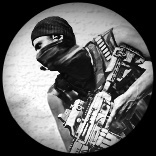Strategic Depth and Squad Dynamics – How Argo Redefines Combat Coordination
In Argo, strategic play is not just encouraged—it is absolutely essential for success, particularly at higher levels of competition. Unlike traditional first-person shooters where twitch reflexes and individual heroics can often carry a match, Argo demands synergy, preparation, and the ability to adapt in real time. At its most competitive, the game becomes a chessboard of coordinated movement, overlapping fields of fire, and objective manipulation. Each match begins with teams evaluating spawn points, available terrain, and the likely strategy of the enemy team. While casual players may dive in without much planning, veteran squads typically spend the opening seconds organizing roles, choosing routes, and setting backup plans in case initial maneuvers fail. Argo punishes poor planning swiftly; a team that spreads too thin or fails to secure key terrain features often finds itself quickly outmaneuvered. Cover is both friend and foe in this dynamic—its usage must be intelligent, never static. Camping a single position for too long invites flanking, grenades, or long-range counter-sniping. The necessity of movement—not just moving fast, but moving smart—underpins the game's deeper strategy layer.

Squad composition is another crucial axis of strategic play. In Argo, a successful team balances its class choices based on the mission type and map design. The Marksman might control sightlines on an open map like Malden’s hills, while a Grenadier becomes essential in urban areas with dense building clusters. Specialists can turn the tide in Link mode by hacking into enemy nodes or placing tactical equipment, making them vital in any serious team composition. But even beyond class selection, player behavior matters—how each squad member communicates, when they choose to fall back, and how they share intel all directly affect match outcomes. Veterans often assign squad roles beyond game-designated classes: squad leaders may call out push timings, while others take responsibility for overwatch or rear guard. Success is measured not just in kills, but in pressure—forcing enemy teams into reactive play, baiting them into traps, or delaying their rotations just long enough to complete an objective. These psychological elements elevate Argo into the realm of strategic warfare, where deception, patience, and initiative mean as much as raw firepower.

 100
Play
100
Play
Additionally, the mid-game often shifts from initial map control to economic and psychological warfare. Once key zones are contested or captured, teams begin using fake-out tactics—firing shots or throwing grenades with no intention of engagement, just to bait enemy rotations. Others use dead silence, allowing entire teams to flank without revealing themselves. It's during these phases that superior map knowledge, such as knowing which alley leads to which rooftop or which crate provides 180-degree cover, becomes a game-changing advantage. Winning in Argo isn’t about brute force; it’s about reading the opponent’s behavior, exploiting terrain, and capitalizing on even the smallest missteps. In high-stakes play, matches often hinge on a single player’s decision to hold fire for five extra seconds or flank instead of charging head-on. The battlefield is a canvas and every decision a brushstroke; when coordinated effectively, a squad can paint a masterpiece of controlled chaos, outthinking and outmaneuvering enemies who rely solely on sharp aim. The result is a game that constantly rewards growth—not just in mechanical skill, but in cerebral finesse and tactical execution.


